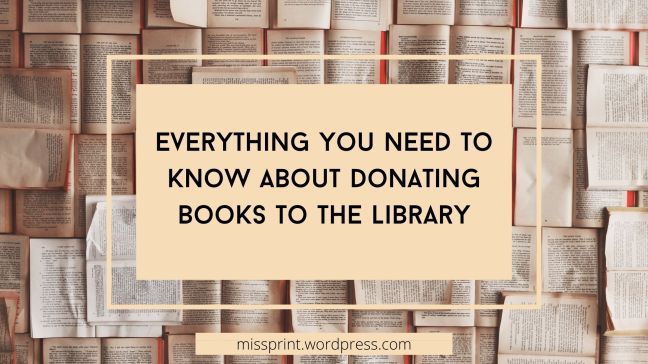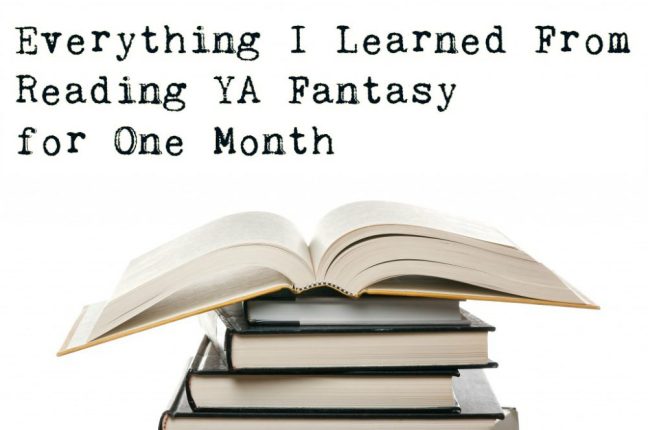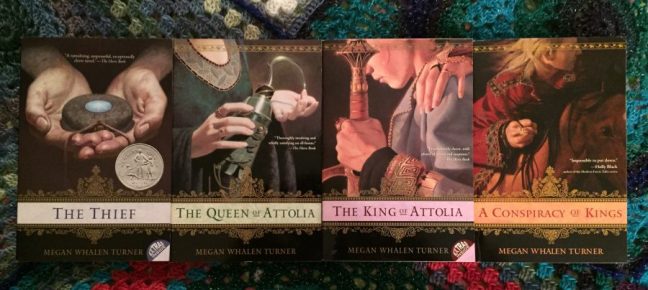If you’re a part of Library Twitter, you might have seen a thread from me about libraries and book donations back in 2021. I’ve compiled all of that information here with some other useful links and an infographic at the bottom of this post:
Why Your Library Might Not Want Your Books:
- Libraries have to consider the cost of materials and labor. Book donations are often more costly to the library than you think. The library needs to accept and store donations. If they add them to a collection that also involves processing them to add to the online catalog plus adding labels, barcodes, etc. If book ordering and processing is centralized that’s one more barrier to discourage adding donated books to a collection.
- Most donations are gross. Even if your books are pristine, most aren’t. A lot of people are very precious about books and use donating to libraries as a way to get rid of books they don’t want to throw out. Meaning libraries get out-of-date, beat-up materials they can’t use.
- Nothing lasts forever. Including books. A healthy and functional library system routinely weeds for condition, low circulation, and other issues. You don’t want a library that will keep everything you give them. It speaks to a lack of attention to community needs/interests.
- Librarians can’t be precious about books. You want them to have that so -called thick skin because it means they are paying attention to what the library community wants and needs on shelves.
- Books are the least of what libraries have to offer the public. Before you spend all of your concern on the books, remember all the other services libraries offer and all of the support library workers provide your community.
- Libraries are very worried about protecting patrons AND staff from exposure to Covid-19. Part of that is limited services. Part of it might also include no longer accepting donations.
Wherever You Donate Books:
- Wherever you donate, especially if you plan on donating in bulk: ASK FIRST
- There might be specific requirements for donations and specific times in which donations are accepted.
- Even if they accepted donations in the past, things change and you don’t want to take a trip for nothing.
- Do NOT leave donations after being told they will not be accepted.
Donated Books Should Be:
- Pristine: no tears, no writing or highlighting, no mold/foxing, dust jackets if applicable, no ex-library copies. If you wouldn’t buy it at a book sale, don’t donate it.
- Recent: If you are donating non-fiction it should have been published within the last five years. Older than that runs the risk of spreading out of date information.
- No textbooks: These are usually too specialized for public libraries and even for academic libraries they are probably out of date.
- No encyclopedias: They’re out of date. Don’t do it.
- No periodicals: Do not bring your old magazines to the library. After you read them their next step in life should be the recycling bin.
When You Donate:
- Donating a book does not mean it will enter the collection. Your books might instead be sold in a library book sale (another costly process for the library to put together), given away at programs, or recycled by the library themselves.
- Remember, once you donate a book, you’re done with it. Which is to say you will not be able to control what happens next. Some will be used and read. Some will be sold.
- Many donated books will be recycled. This is the natural cycle of a book (really). The good thing about donating is, even if they end up being recycled, it will be done properly because the donation site probably has a relationship with a book recycling facility.
Your Library Doesn’t Take Donations. Now What?
Before we talk about donation options, I also want to be clear: “readable” is not the same as “donatable.” Any books you donate should be pristine—new or very good condition with dust jackets if applicable. For non-fiction this also means recent. Older than 5 years? Recycle it.
Remember: ALWAYS ASK before donating books.
You can try donating books to some of these places instead of your local library:
- Local Schools/Teachers (when books are age appropriate): With very few exceptions your books will not end up in a school library, but they might be useful for a teacher’s classroom library.
- Local Hospitals: Many hospitals have waiting rooms or other sites with books. Be prepared for them to have restrictions on what they can accept and when, especially with the pandemic.
- Thrift Stores/Used Bookstores: You might find a store that will buy books from you. They will pay a fraction of retail. You might also find stores that will accept donations to resell.
- If you are in NYC you can look into selling your books to the Strand: https://www.strandbooks.com/sellyourbooks (you won’t know what they will or won’t accept until you are there with the books)
- Powell’s has an online selling tool where you can enter ISBNs to see price and manage shipping to them: http://www.powells.com/sell-books
- SellBackYourBook.com buys a variety of titles. You can enter ISBNs online or scan with their app. Prices aren’t phenomenal (if selling in bulk, the average price will be $1-2) but they offer free shipping and give the option to return or recycle anything they don’t accept. Note that they only accept 1 copy of each ISBN per household so don’t attempt to resell multiple copies of the same title.
- BookScouter.com is a good site to check if you want to compare prices for titles. Even if you aren’t selling to one of the sites listed, it can be a good gauge of demand for the title in question.
- Local Shelters
- Retirement Centers and Nursing Homes: Many people chimed in with this suggestion. They might only accept specific formats or types of books so be sure to check before trying to drop something off.
- Local Literacy Programs
- After School/Daycare Programs (when age appropriate)
- Armed Forces Charities: There are many organizations that get books into the hands of members of the armed forces. You can get details on where to start at Books for Soldiers and Operation Paperback.
- Prison Libraries: Many prison libraries are also desperate for materials. They are a great place to donate but will have restrictions on the types of books they can accept (this could be both for content and format).
You can find Books to Prisoners programs here: https://prisonbookprogram.org/prisonbooknetwork/
For more comprehensive information on donating to prison libraries–including contacts for NY-centric donations–check out this flyer from the Prison Library Support Network (PLSN): https://plsn-nyc.tumblr.com/donate - Spread the Word Nevada: According to their website this “nonprofit organization seeks to change the lives of children within low-income communities through books. While developing a love for reading, these libraries promote future academic achievement and self-confidence, which impacts lifelong success.” Through the Zappos for Good program you can use your Zappos/Amazon account info to log in and receive a free label for your donated books. Then just drop the package off at a UPS Store location. Details here: https://www.zappos.com/about/zappos-for-good/spread-the-word-nevada
- Book Donation Map of America: If you’re not sure where to start for donations you can check the Book Donation Map of America to find sites near you: https://localbookdonations.com/book-donation-map-america/
What Else Can You Do With Books You Want to Donate?
If you don’t have any luck with any of the above you can also:
- Add your books to a little free library (or create one)
- Give books to Brooklyn Book Bodega: According to their website “Brooklyn Book Bodega increases the number of 100+ book homes in Brooklyn. Research shows that households with 100+ books boost life outcomes for children and adolescents. ” They work with several sites to accept donations. As always, check that donation sites are accepting first and only donate books in great condition.
- Ask at local laundromats
- Set up book swaps in your community (following safety protocols)
- Post them on Paperback Swap: This is a trading site where you can post individual books for trade. They also run periodic campaigns accepting donations for schools and the military.
- Use books for altered book crafts including folded book sculptures, collage, using pages for origami, etc. You can find some book art tutorials in this video: https://www.youtube.com/watch?v=xaCIIkaCEX4
Other Ways to Support Your Library:
Libraries are so much more than books. The best ways to support your local library (and your library’s workers) are to use it, to give cash donations, and to advocate for the library with your elected officials.











